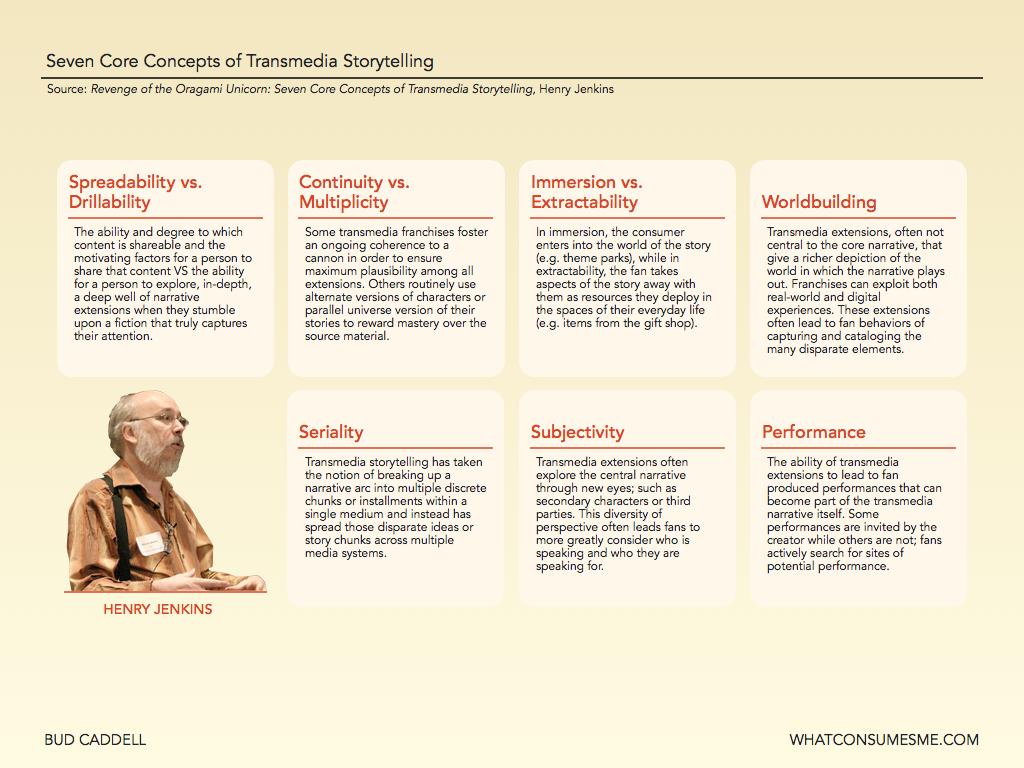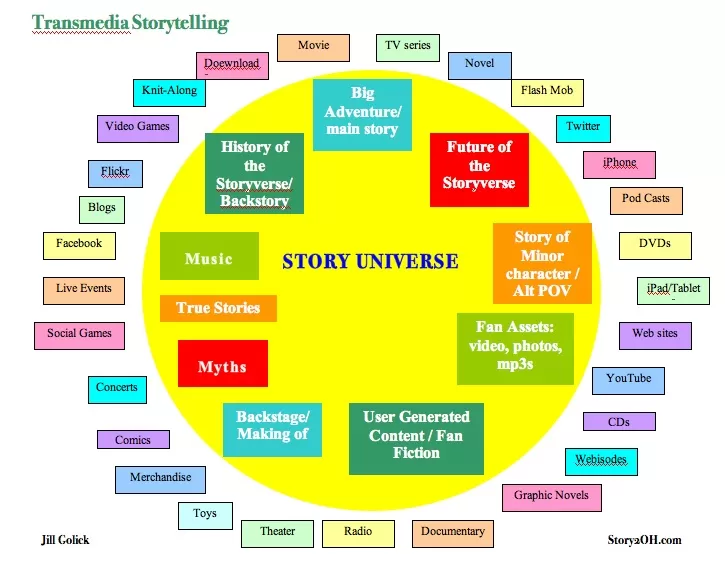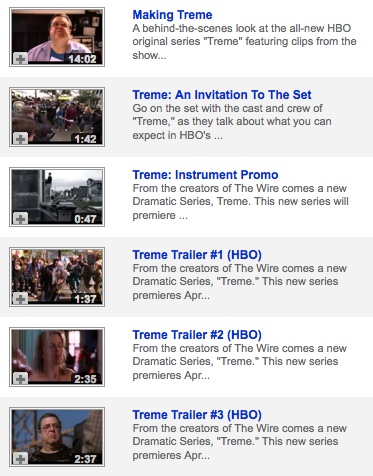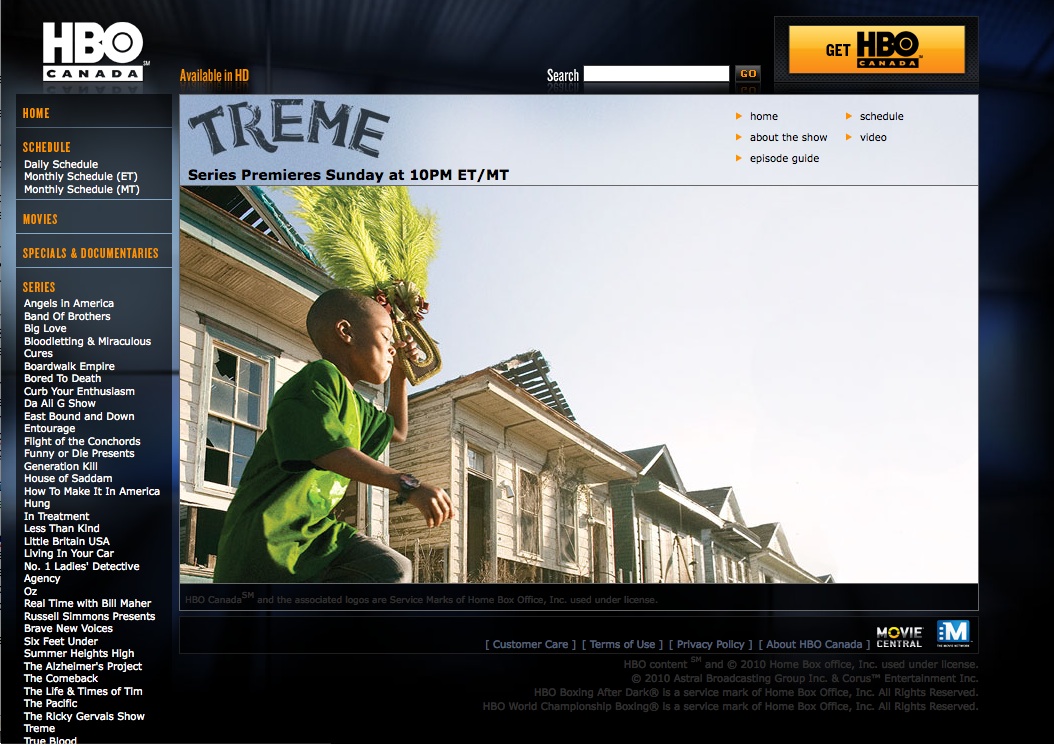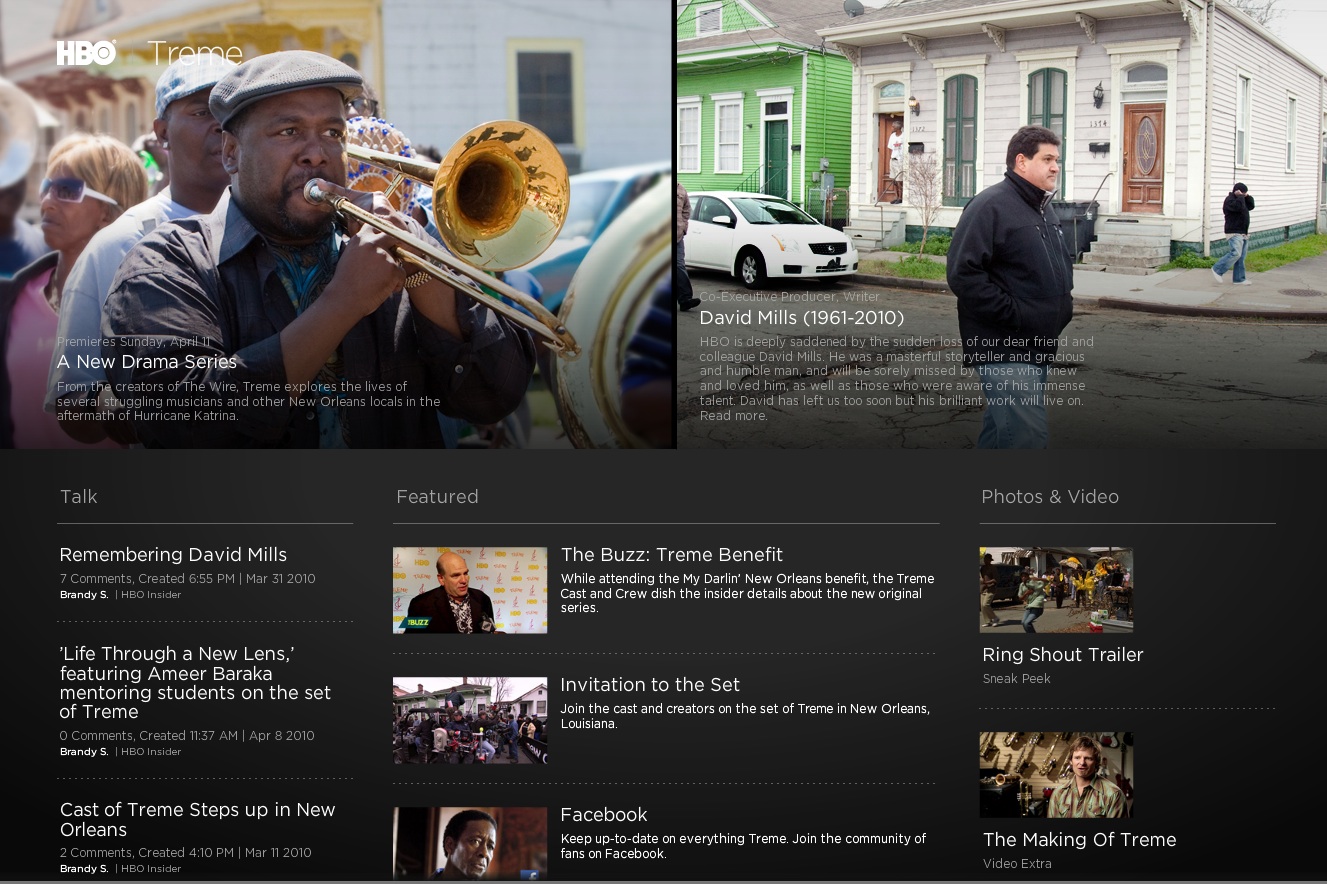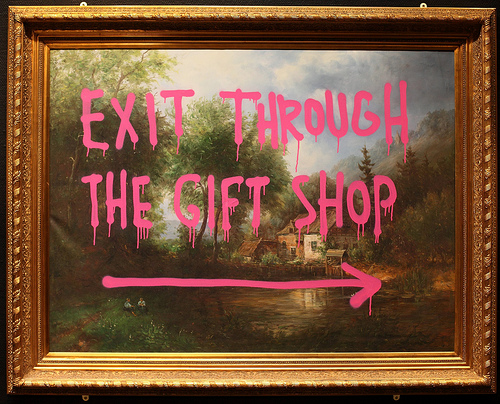I’ve spent a lot of time in front of various screens the last few days leaning back. I watched Funny People, Up In the Air, Something the Lord Made, Paper Heart and few episodes of the fourth season of Friday Night Lights (and it’s very hard for me to be sitting at my desk instead of binging on the rest of the FNL episodes I have waiting for me).
Total sidebar: These screen-based entertainments came to me in a variety of ways. Download, theatrical release and cable-based on-demand. I watched them on computer screens, big screen televisions, theatre screens and my little portable DVD player.
Because transmedia is on my mind at all times now, after watching each my mind went straight to how I could build the storyworlds out into other media.
Up in the Air has already been expressed in two mediums (the film is an adaptation of the 2001 novel Up in the Air written by Walter Kirn) and we’d only need one more platform to call it transmedia.
You could easily build up some websites to explore aspects of protagonist, Ryan Bingham’s world. Character Natalie Keener is a natural for a blog. You could build out a little customizable app to send to your friends that fired them. You could set up a forum in which people could tell the stories of how they’ve been fired (think PostSecrets only for getting fired).
But because the story is about an isolated man, the world created in the film is one that feels constricted and closed off. As the story begins, Ryan Bingham thinks he’s got life figured out and by the end, he realizes that he’s built a tiny, surgical box around himself. Like Bingham, I don’t want to spend more time in this world. After the closing credits, I didn’t want to think about the film anymore. So no wonder I don’t feel much like developing other platforms for it.
 Funny People offers up a world that’s fairly bleak at times, but I ended up spending a lot of post-viewing time thinking about the story, characters and world. I keep going back to it in my mind. Does that make it a great transmedia candidate?
Funny People offers up a world that’s fairly bleak at times, but I ended up spending a lot of post-viewing time thinking about the story, characters and world. I keep going back to it in my mind. Does that make it a great transmedia candidate?
According to Wikipedia a number of properties were created in order to market the film:
A website for a fictional television show-within-a-film was created on NBC.com. The sitcom, Yo Teach!, “stars” the film’s egocentric character Mark Taylor Jackson (Jason Schwartzman), who is a C-list actor portraying a young teacher with a class of failing students, and includes a cameo by internet celebrity Bo Burnham.
A website for Aziz Ansari’s character Randy Springs was created, along with a documentary of the character on FunnyOrDie.com. The documentary was directed by Jason Woliner.
Comedy Central aired a special, “Inside Funny People” on July 20, documenting the making of the film and showing clips of the stand-up. The channel also aired “Funny People: Live” on Friday, July 24, which is a live broadcast stand-up of Adam Sandler, Seth Rogen, and Jonah Hill as part of the film’s promotion.
Tons more could be done, not just to market the film, but to allow fans to spend more time in the universe created. I I’d love to explore the lives of some of the minor characters including Ira’s love interest, Daisy Danby. You could do a film, book or web series just about her. You could make one of George’s early comic films. You could create a comic book series “written by” Ira’s roommate, Leo. It would be fun to put out a comedy album featuring the work of the various comedian-characters from the film including both George and Ira. They could even go on tour. I’d love to see a movie or read a book about George’s early years and the story of Ira, later in life, taking a young comic under his wing, seems like a natural.
I enjoyed Funny People quite a bit, so I’d like more of that world. But of all the worlds I visited recently, Friday Night Lights is my fav.
This is a world first describe in the nonfiction book Friday Night Lights: A Town, a Team, and a Dream by H. G. Bissinger. The film Friday Night Lights, written by Peter Berg and David Aaron Cohen, was based on the book. After the film, Berg and producer Brian Grazer, weren’t ready to leave the story world behind, so they developed the television series of the same name.
 But weekly episodes do not quench my hunger for this world and the people who inhabit it. I could delve more deeply into any of the characters’ lives through spin off TV or web series or blogs for examples. I’d definitely follow Principal Tammy Taylor’s tweets. I imagine she’d have some damn practical advice.
But weekly episodes do not quench my hunger for this world and the people who inhabit it. I could delve more deeply into any of the characters’ lives through spin off TV or web series or blogs for examples. I’d definitely follow Principal Tammy Taylor’s tweets. I imagine she’d have some damn practical advice.
In fact, a little book of wisdom from Friday Night Lights (you could title it Clear Eyes, Full Heart) would do well on my coffee table. Tammy and Eric Taylor are both quick with the pithy one-liners. You could learn a lot from them about coaching football, raising teens and successful marriage.
Is there a map of Dillon online somewhere? A guide to the other teams in the league the Panthers and East Dillon’s Lions play against? A collection of cheers and football traditions? A website for Garrity Motors? Probably fans have created many of these things.
FNL has three important ingredients for transmediation.
- It’s got a world. Football crazy, Christian, small town Dillon Texas is a rich place that offers the opportunity for us to drill down much deeper. The comedy world of Funny People has that too. Up In the Air doesn’t. It’s hermetically sealed world of isolation doesn’t offer the same potential unless of course you’re interested in airport lounges and chain hotel rooms.
- It’s got a wealth of characters with lots of life outside the TV series. The ensemble cast of FNL is big and there’s lots of room to know more about them. This is again true for Funny People, but not so much for Up In the Air which has only three leads.
- It’s got a deep philosophy or theme. FNL has a lot to say about how to lead your life. Funny People does as well. Up In the Air definitely has an underlying philosophy, it’s wrong to have an empty backpack. Fill it up with people or your life will be empty. But the world created in the film, doesn’t offer me multiple opportunities and characters through which to explore this philosophy. Instead it urges me to go be with real people.
I think I’ll watch another episode of FNL instead.

 Funny People offers up a world that’s fairly bleak at times, but I ended up spending a lot of post-viewing time thinking about the story, characters and world. I keep going back to it in my mind. Does that make it a great transmedia candidate?
Funny People offers up a world that’s fairly bleak at times, but I ended up spending a lot of post-viewing time thinking about the story, characters and world. I keep going back to it in my mind. Does that make it a great transmedia candidate? But weekly episodes do not quench my hunger for this world and the people who inhabit it. I could delve more deeply into any of the characters’ lives through spin off TV or web series or blogs for examples. I’d definitely follow Principal Tammy Taylor’s tweets. I imagine she’d have some damn practical advice.
But weekly episodes do not quench my hunger for this world and the people who inhabit it. I could delve more deeply into any of the characters’ lives through spin off TV or web series or blogs for examples. I’d definitely follow Principal Tammy Taylor’s tweets. I imagine she’d have some damn practical advice.